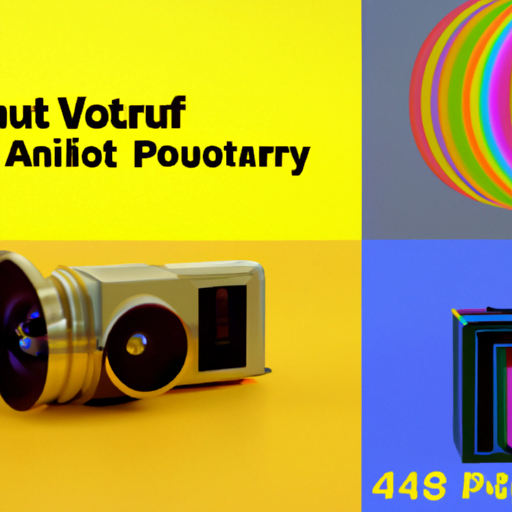-
Table of Contents
Futurism and Graphic Design: Merging Art and Technology
Graphic design has always been influenced by the prevailing trends and technologies of its time. From the invention of the printing press to the rise of digital design tools, the field has constantly evolved to adapt to new possibilities. One of the most exciting and transformative periods in graphic design history is the emergence of futurism, a movement that sought to merge art and technology in innovative ways. In this article, we will explore the impact of futurism on graphic design and how it has shaped the field as we know it today.
The Origins of Futurism
Futurism was an artistic and social movement that originated in Italy in the early 20th century. It was founded by Filippo Tommaso Marinetti, an Italian poet and writer, who published the “Futurist Manifesto” in 1909. The manifesto called for a rejection of the past and a celebration of the future, advocating for the use of technology and industry as sources of inspiration for art.
One of the key principles of futurism was the idea of dynamism, capturing the energy and movement of modern life. This concept was reflected in the use of bold, geometric shapes, vibrant colors, and unconventional compositions in futurist artworks. Artists sought to break away from traditional artistic conventions and embrace the possibilities offered by new technologies.
The Influence of Futurism on Graphic Design
The futurist movement had a profound impact on graphic design, pushing the boundaries of what was considered acceptable and inspiring new approaches to visual communication. Here are some key ways in which futurism influenced graphic design:
- Experimentation with Typography: Futurist artists and designers were known for their innovative use of typography. They experimented with unconventional letterforms, fragmented text, and dynamic layouts to convey a sense of movement and energy. This approach challenged the traditional rules of typography and paved the way for more expressive and experimental designs.
- Embracing Technology: Futurism celebrated the machine age and the possibilities offered by new technologies. This enthusiasm for technology was reflected in graphic design through the use of industrial imagery, mechanical motifs, and futuristic aesthetics. Designers incorporated elements such as gears, wires, and circuit boards into their compositions, creating a visual language that conveyed a sense of progress and innovation.
- Dynamic Compositions: Futurist artworks often featured dynamic compositions that conveyed a sense of movement and energy. This approach was adopted by graphic designers who sought to create designs that captured the attention of viewers and conveyed a sense of urgency. By using diagonal lines, overlapping elements, and fragmented imagery, designers were able to create visually striking compositions that stood out from traditional designs.
- Use of Vibrant Colors: Futurist artists embraced vibrant colors as a way to convey energy and excitement. This use of bold and unconventional color palettes was also adopted by graphic designers who sought to create designs that were visually impactful. By using bright and contrasting colors, designers were able to create designs that grabbed the viewer’s attention and conveyed a sense of dynamism.
Case Studies: Futurism in Graphic Design
To better understand the impact of futurism on graphic design, let’s take a look at some case studies that showcase how designers have incorporated futurist principles into their work:
1. Nike Air Max Campaign
In 2019, Nike launched a campaign for their iconic Air Max sneakers that drew inspiration from futurism. The campaign featured dynamic compositions, bold typography, and vibrant colors to convey a sense of energy and innovation. The use of futuristic motifs and imagery created a visual language that resonated with the target audience and reinforced the brand’s association with progress and cutting-edge technology.
2. Wired Magazine Redesign
Wired Magazine, a publication known for its coverage of technology and innovation, underwent a redesign in 2011 that embraced futurist principles. The new design featured bold typography, dynamic layouts, and a vibrant color palette. The use of unconventional compositions and futuristic imagery helped to create a visual identity that reflected the magazine’s focus on the future and its commitment to pushing the boundaries of design.
The Future of Futurism in Graphic Design
As technology continues to advance at an unprecedented pace, the influence of futurism on graphic design is likely to grow even stronger. With the rise of virtual reality, augmented reality, and artificial intelligence, designers have a whole new set of tools and possibilities at their disposal. The merging of art and technology will continue to shape the field of graphic design, allowing for even more innovative and immersive experiences.
However, it is important for designers to strike a balance between embracing new technologies and maintaining a human touch. While futurism celebrates progress and innovation, it is essential to remember that design should ultimately serve a purpose and connect with people on an emotional level. The fusion of art and technology should enhance the user experience and create meaningful connections, rather than simply being a showcase of technical prowess.
Conclusion
Futurism has had a profound impact on graphic design, pushing the boundaries of what is possible and inspiring new approaches to visual communication. The movement’s emphasis on dynamism, technology, and vibrant colors has shaped the field and continues to influence designers today. By embracing futurist principles, designers can create visually striking and innovative designs that capture the attention of viewers and convey a sense of progress and excitement.
As technology continues to evolve, the future of futurism in graphic design looks promising. By harnessing the power of new technologies and combining it with a human-centered approach, designers can create experiences that are both visually stunning and emotionally resonant. The merging of art and technology opens up endless possibilities for the field of graphic design, and it will be exciting to see how designers continue to push the boundaries in the years to come.
